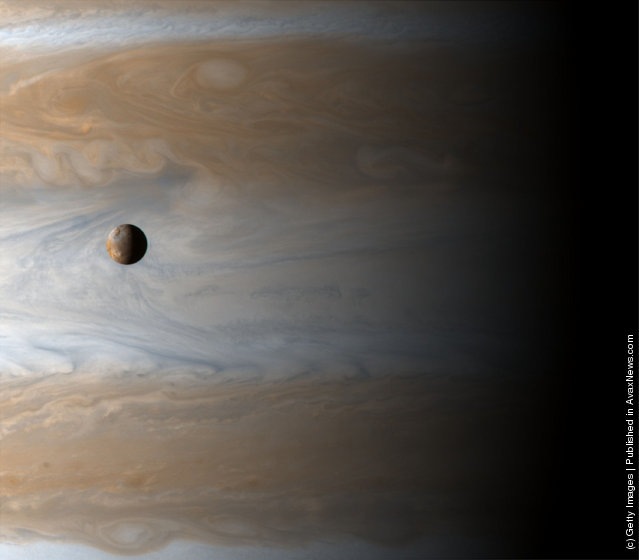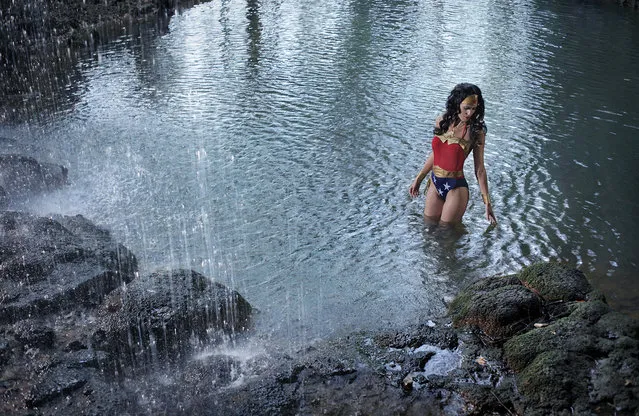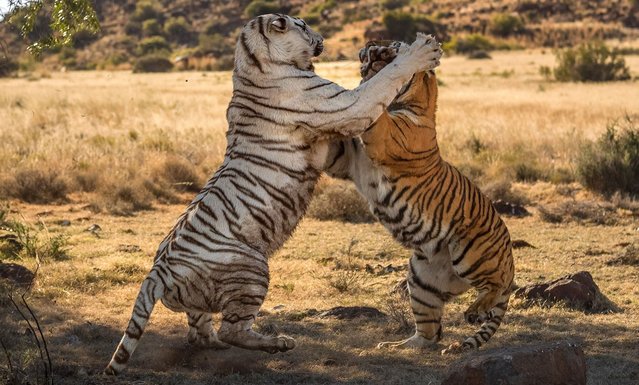21 Jan 2019 00:03:00,post received
0 comments
Details

Gliding past the planet Jupiter, the Cassini spacecraft captures this awe inspiring view of active Io, Jupiter's third largest satellite, with the largest gas giant as a backdrop, offering a stunning demonstration of the ruling planet's relative size, April 20, 2001. The Cassini spacecraft itself was about 10 million kilometers from Jupiter when recording the image data. (Photo courtesy of NASA/Newsmakers)
23 Mar 2011 10:32:00,post received
0 comments

What do superheroes do when they’re not busy fighting bad guys and saving the world from destruction? Perhaps they’re drawing strength alone in the peace and quiet of the great outdoors. That’s the premise of French photographer Benoit Lapray‘s photo-manipulation series “The Quest for the Absolute.”
23 Sep 2014 10:50:00,post received
0 comments

Indian police detain a Tibetan activist during a protest held to mark the 57th anniversary of the Tibetan uprising against Chinese rule, outside the Chinese embassy in New Delhi, India, March 10, 2016. (Photo by Cathal McNaughton/Reuters)
11 Mar 2016 14:24:00,post received
0 comments

Dont get catty. These roar-some images show the moment two female tigers came to blows in a bitter dispute over territory. Rarely ever seen in the wild let alone on camera, the dramatic images show a white Siberian tiger and orange-coloured tiger slashing ferociously at each others face and eyes. The intense altercation erupted into violence when the smallest of the pair, the orange striped tiger known as Shadow, attempted to expand its hunting ground. But white tiger, TiBo, wasnt willing to give up the ground without a fight and was forced to use its size and weight to put Shadow firmly back in her place. (Photo by Alex Kirichko/Caters News/SIPA Press)
26 Dec 2014 15:28:00,post received
0 comments

The arctic hare, or polar rabbit, is a species of hare which is adapted largely to polar and mountainous habitats. The arctic hare survives with a thick coat of fur and usually digs holes in the ground or under snow to keep warm and sleep. Arctic hares look like rabbits but have shorter ears, are taller when standing, and, unlike rabbits, can thrive in cold climates. They can travel together with many other hares, sometimes huddling with dozens or more, but are usually found alone, taking, in some cases, more than one partner. The arctic hare can run up to 60 kilometres per hour (40 mph). Its predators include the arctic wolf, arctic fox, and ermine.
17 Mar 2014 13:56:00,post received
0 comments

There are not many sculptures in the world that were purposely made to be grotesque, especially on such a large scale. Thus, a Hungarian artist Ervin Loránth Hervé has apparently decided that there isn’t enough horror in this world and created the Feltépve – a sculpture of a stone giant ripping apart the earth in order to break free. However, when we look from another perspective this sculpture might depict a grouchy giant trying to cover himself with a blanket of earth so that everyone would leave him alone. The latter interpretation of this sculpture was probably not intended by the sculptor; however, the way the arms of the giant are positioned makes it look as if it was truly the case.
04 Nov 2014 11:49:00,post received
0 comments

“Man is least himself when he talks in his own person. Give him a mask, and he will tell you the truth”. – Oscar Wilde. (Photo by Lala Roe)
07 Apr 2015 08:38:00,post received
0 comments

